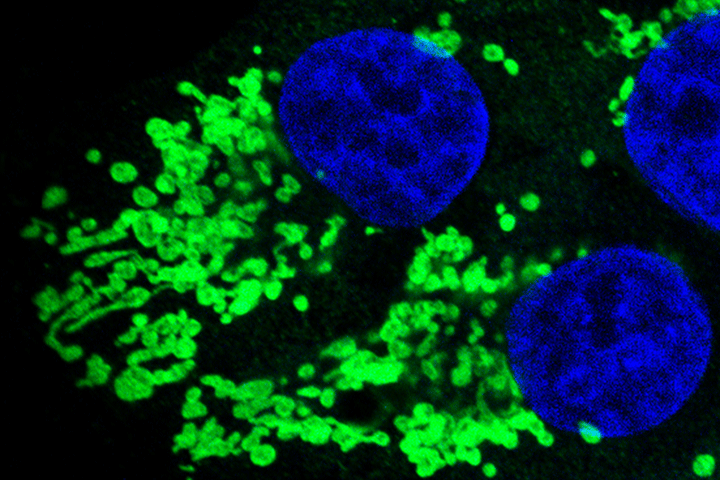Study Shows Fungi Boost Pancreatic Cancer Development and Growth

Most people don’t think too much about fungus, except if you’ve ever been plagued by dandruff, yellowing toenails, or a yeast infection.
On the plus side, fungi can heal you, with penicillin being just one of several medicinal drugs derived from these microbes. Although bacteria have gotten all the press, especially when it comes to the human gut microbiome, funguses—which number about 2 million species and have their own microenvironment called the mycobiome—can take up residence in the gut, too. Unlike bacteria, funguses are present in the gut in much lower numbers.
But in a study published in the journal Nature in October 2019, researchers from the NYU Grossman School of Medicine and the NYU College of Dentistry (both in New York City) found that some of these fungi travel from the gut into the pancreas and may play a dastardly role in pancreatic cancer. According to their research, certain species of fungi may act like a tumor promoter, spurring pancreatic cancer inception and growth.
This was a surprise to the researchers. “We didn’t start out wanting to study fungus, but it wasn’t much of a stretch since bacteria and fungi are kind of distant cousins,” says senior study co-author, Dr. George Miller, a surgical oncologist and scientist whose lab studies the bacterial microbiome and its role in pancreatic cancer.
Identifying the Role of Fungi
More than a year ago, Miller and colleagues published a preclinical study in which the use of antibiotics resulted in a slow-down of pancreatic cancer growth and boosting of the ability of immune cells to recognize and eradicate pancreatic cancer cells—one of the challenges in immunotherapy for pancreatic cancer. But the genetically engineered mouse models used in the study were also treated with antifungal drugs to prevent fungal overgrowth from these antibiotics.
On first submission, the paper was sent back. A peer reviewer told the group they had to control for the antifungals used in the research. Once that was done, the paper was accepted for publication. As an added bonus, the research team got some interesting fungus-related data on which to base the current study, says Miller, co-leader of the Tumor Immunology Research Program at Perlmutter Cancer Center at NYU Langone Health and Director of the S. Arthur Localio Laboratory. “Most scientists thought the pancreas was just sterile, nothing could live there, there would be no bacteria, basically nothing,” he says. “But that’s no longer even remotely accepted. Our own work shows the role that bacteria play, now we’re finding out for the first time that fungi play a role, too. To be honest, we never expected fungi to play such a potentially big role.”
About the Study
The study shows the fungal population is different in a pancreas ridden with cancer compared to a healthy pancreas—both in mice and in humans. But the researchers found that giving mice with pancreatic cancer an antifungal drug, specifically the powerful wide-spectrum agent amphotericin B, resulted in a 20 to 40 percent reduction in tumor weight, and up to a 30 percent reduction in the development of ductal dysplasia, a cellular change leading to pancreatic cancer, explains Berk Aykut, M.D., a postdoctoral fellow in Miller’s lab. Plus, antifungal treatment made gemcitabine, a chemotherapy agent used alone or in combination with other drugs to treat pancreatic cancer, more effective, by as much as 25 percent.
To answer the big question on whether the mycobiome changes as normal, healthy cells undergo oncogenesis, or become malignant, the researchers analyzed more than 30 weeks of fecal samples from mice with pancreatic cancer, specifically the most common type of pancreatic cancer, pancreatic ductal adenocarcinoma, or PDAC.
Aside from using genomic and statistical techniques to detect fungal species present, glowing proteins were also attached to the fungi to better track migration from the gut into the pancreas. It was found that these fungi can enter the pancreatic duct. The duct is a slender tube-like structure used by the pancreas to get digestive juices into the intestines. As its name suggests, PDAC actually develops when the cells lining the tube become malignant. The fungi get into the pancreas by traveling through this duct in the opposite direction to the digestive fluids.
In terms of fungi making the journey to the pancreas, the largest population increase in both mice and in human tissue was in a fungus called Malassezia, which is responsible for many skin issues like eczema, and scalp problems like dandruff. Some research has linked Malassezia to skin and colorectal cancer as well. Fungi called Parastagonospora, Saccharomyces, and Septoriella were also detected in much higher numbers in PDAC tissues versus healthy controls.
Once the mice underwent antifungal treatment to kill off the fungal species in their pancreases, the researchers repopulated those pancreases with specific species of fungus to determine which caused cancer growth. They found that cancer grew 20 percent faster in the pancreases of mice repopulated with Malassezia. The presence of other fungal species did not affect PDAC growth. The reason Malassezia fungus seems to boost PDAC growth is most likely due to an immune response called the complement cascade that can lead to abnormal tissue growth, Miller explains.
The Next Steps
The research team would like to determine which fungi may be most linked to cancer development in hopes of eventually devising ways to potentially slow tumor growth with antifungal drugs. “We’ve already shown that fungi can be a good adjuvant for treatment with an antifungal synergizing with gemcitabine-based chemotherapy,” Miller says. “In a perfect world we would like to see if treating patients with antifungals makes a dent in pancreatic cancer. This is a great first step, and I think we will get to clinical trials sooner rather than later.”
Another potential avenue of exploration is to use fungus as a potential biomarker by examining stool samples of patients who in later life may be more susceptible to pancreas cancer development, Aykut says.
Miller credits the entire team with the findings. “These things are never done in isolation and there was a lot of work put into this, with each team member bringing a special expertise to the study,” he says. Other scientists involved in the study include senior co-author Deepak Saxena, Ph.D., professor of Basic Science and Craniofacial Biology at NYU College of Dentistry and co-first author Smruti Pushalkar, Ph.D., a research scientist at NYU College of Dentistry, as well as other researchers from the S. Arthur Localio Laboratory in the departments of Surgery and Cell Biology at NYU Grossman School of Medicine, and researchers from the biology department of Brooklyn College and the biology and biochemistry programs of The City University of New York.






